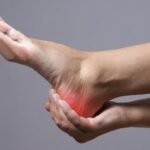
Delve into the world of human anatomy as we explore hinge joints, ball-and-socket joints, pivot joints, and saddle joints. Discover their functions, locations, and potential injuries in this comprehensive guide.
The human body is a marvel of intricate design, and one of its most remarkable features is the diversity of joints that allow us to move, flex, and adapt to our surroundings. Joints are the connectors that hold our bones together, enabling us to perform a wide range of movements. In this comprehensive guide, we will delve into the four main types of joints found in the human body: hinge joints, ball-and-socket joints, pivot joints, and saddle joints. By the end of this journey, you’ll have a better understanding of how these joints work, where they are located, and how to prevent and manage common injuries associated with them.
Hinge Joints
Hinge joints are aptly named for their simple yet effective design. Just like the hinge on a door, these joints allow movement in only one direction, much like opening and closing a book. Hinge joints are primarily found in the fingers, elbows, and knees. The elbow joint, for instance, allows you to flex and extend your arm, while the knee joint permits you to bend and straighten your leg. These joints are essential for everyday activities such as walking, picking up objects, or simply sipping a cup of coffee.
Common injuries associated with hinge joints include sprains, strains, and conditions like tennis elbow and runner’s knee. Maintaining proper form during physical activities and incorporating strength and flexibility exercises can help prevent these issues.
Ball-and-Socket Joints
Ball-and-socket joints are among the most versatile joints in the body. The design allows for a wide range of motion, similar to the movement of a ball in a socket. The hip and shoulder joints are prime examples of this type. Your hip joint enables you to walk, run, and perform dynamic movements, while the shoulder joint allows you to lift your arms in various directions.
Injuries related to ball-and-socket joints can include dislocations, tears, and arthritis. Protecting these joints through proper warm-ups and strengthening exercises can significantly reduce the risk of injury.
Pivot Joints
Pivot joints are specialized joints that allow rotational movement. The best example of a pivot joint is the one found between the first and second cervical vertebrae, which enables you to turn your head from side to side. This movement is crucial for our ability to scan our surroundings and communicate effectively with others.
Injuries to pivot joints can be uncommon but may occur due to trauma or degenerative conditions. Maintaining good posture and performing neck-strengthening exercises can help protect these delicate joints.
Saddle Joints
Saddle joints are unique in that they resemble two saddles fitting together. The most prominent saddle joint in the body is the joint at the base of the thumb, which enables you to grasp objects with precision and dexterity. Saddle joints are essential for fine motor skills and tasks requiring a delicate touch.
Common issues with saddle joints include osteoarthritis and overuse injuries. To prevent these problems, it’s important to maintain proper hand ergonomics and hand-strengthening exercises.
Understanding the four main types of joints in the human body is not only fascinating but also practical. It allows you to appreciate the complexities of your body and empowers you to take better care of it. By knowing where these joints are located and their functions, you can make informed decisions about your physical activities and adopt practices that minimize the risk of injuries. So, take the time to get to know your joints – they’re the unsung heroes that keep you moving every day.




